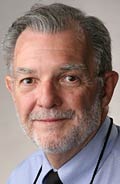Creativity, discovery, innovation fuel Hill's design process class

Rodney Hill
No textbooks, no tests, no scantrons — Prof. [Rodney Hill] (http://www.rodneyhill.com/) ’s creativity class at [Texas A&M University] (http://tamu.edu) doesn’t have a trace of the elements found in a traditional college course, instead relying solely on discovery and innovation. After all, it’s not every class that requires students to sign a non-disclosure agreement before attending lectures.
The non-disclosure agreement, says Hill, is mandatory, as it protects students taking the course, which is formally titled “Environmental Design 101 C: The Design Process.” This is because in the decade-long existence of the course, some students who complete the class have gone on to patent their ideas for products and launch businesses based on class assignments.
In the past, Hill, a professor of [architecture] (http://www.arch.tamu.edu/) , structured the project-driven course in a way that focused on the future of the world — he encouraged students to look to 2030 and beyond to imagine what sorts of goods and services would need to be created to keep up with society’s growth and technology dependence.
In this semester’s course, Hill still emphasizes the future, but for the first time ever, his students’ final grades will depend on the development of their own business.
“I tell my students to take the money they would have invested in a textbook, take that $100 and put it into a business, something that they can reap profits from,” he says.
There is usually a waiting list for the freshman-level course, which attracts students of all classifications from a slew of majors. No matter his or her age or field of study, Hill says his students have an edge that serves them well, especially when they compete in innovation competitions.
“Most scientists were in their early 20s when they came up with major innovations,” he adds. “We’ve got freshmen, seniors, and they compete in these national and international competitions with graduate students from around the world, and they beat them.”
Students’ groups within the course are also strategically designed, Hill notes. He carefully breaks the students into teams of six. In each group, there are six different majors, as well as three males and three females. This, Hill says, is done to force students to interact with one another, as well as to generate even more ideas, which is possible because of the many different points of view present in each group.
The course is strategically designed to help students discover their own ideas and become comfortable with their own creativity. Hill’s early lectures focus on techniques used to reach the right mindset to generate ideas; these include relaxation and visualization exercises, many of which Hill says his former students still use in their careers beyond graduation to cultivate fresh ideas.
“Everybody has some creative abilities,” Hill says. “We’re just uncovering them. We peel back the layers, piece by piece, and anything goes.”
Throughout the semester, students have heard from several guest lecturers, including former students, who are successful entrepreneurs, budding venture capitalists and experts, all of which help the students explore different facets of turning their ideas into sustainable businesses. They have done patent searches, looked through trademarks, studied copyright law, and competed with students from across the world, all in the name of innovation.
The class has served Texas A&M students well — products and businesses that have been born from Hill’s course include [CS iPhone Repair] (http://www.csiphonerepair.com/) , a business that does just what it says by repairing the popular mobile device, as well as the [Glif] (http://www.studioneat.com/products/glif-for-iphone-4) and [Cosmonaut] (http://www.studioneat.com/products/cosmonau) , both products of [Studio Neat] (http://tamutimes.tamu.edu/2011/11/25/texas-am-design-class-runs-on-creativity/www.studioneat.com) , another business started by former students.
“We’re helping our students discover themselves and become comfortable with what they’re capable of,” Hill says. “This course is all about self-discovery and developing innovation.”
Tags
- academics
- applied creativity
- architecture
- college culture
- entrepreneurship
- interdisciplinary
- studio projects
- undergraduate work
- video
Related Posts

Colorful installation gives cafe a facelift
Design Process class featured in The Eagle
Design Process students excel in Ideas Challenge

Studio education: What sets us apart

Students exhibit installations, model wearable architecture
Follow Us
Facebook Twitter Vimeo Youtube Flickr RSS
Recent Posts

Planning prof heads study of disaster housing aid

A message from the dean

Former student remembered as expert planner

Leading educator named new head of Architecture Dept.




_thumbnail_small.png)
